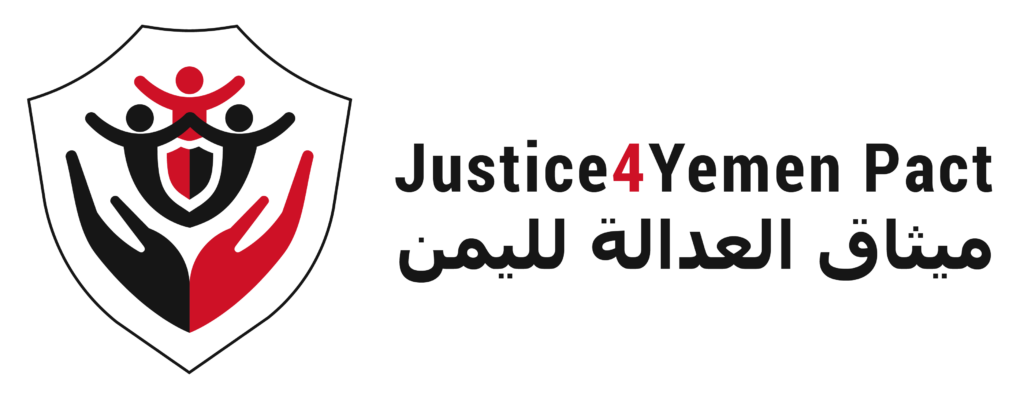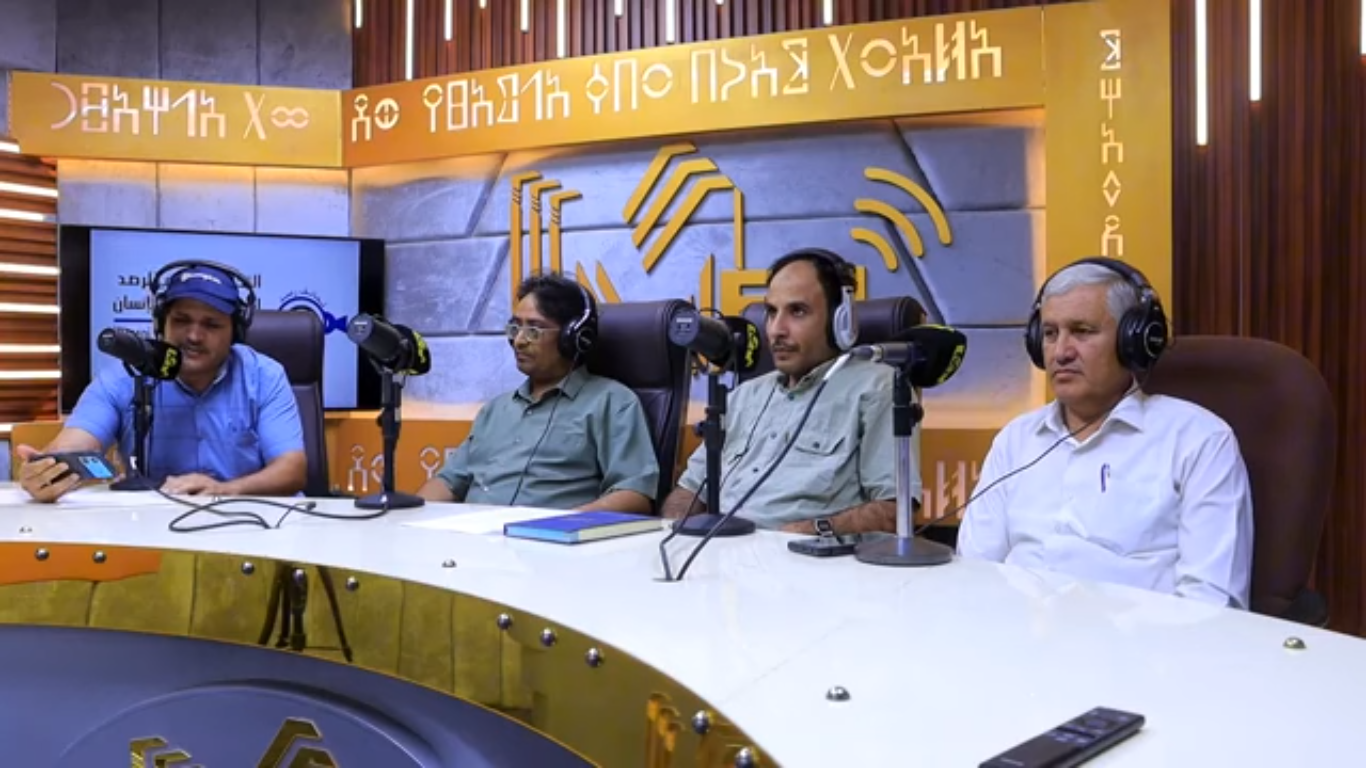In a recent blog post, Musaala Organization for Human Rights explores the unique burden of Internally Displaced People (IDPs) on Marib Governorate. Being one of the first governorates to welcome displaced people, Marib has become a “last report for the displaced” and experienced a massive population boom. Over 197 camps have been established on the outskirts of Marib where people live under increasingly difficult humanitarian conditions. Read the full blog post for more information.

IDPs Painful Journey in Yemen
By: Dr. Yahya Ahmad Al-Ahmadi – Academic and Political Researcher
The worst kind of tragedy is when someone is compelled to leave their house, their belongings, and their way of life. to start the painful journey of looking for a place to live and a place to sleep, and to face tough challenges while moving through the camps scattered around Marib and other Yemeni governorates. Since the conflict in Yemen began, the outcome has been tragic as the Houthi group has driven hundreds of thousands of Yemenis from their homes, forcing them to live in cramped quarters without even the most necessities.
As war enters the eighth year, Yemen is considered as one of the worst humanitarian disasters in the world. A tragedy brought about by the Houthi war on Yemenis, which has turned their lives into a living hell. Eight years after the disaster, which exhausted the displaced and decimated them with nature’s cruelty, the elderly, women, and children whose faces were sunburned and wrinkles of time appeared on their foreheads, and those who survived the shells of death, will not be safe from rain and flood.
According to official statistics released by the Executive Unit for the Displaced, Yemen has seen a wave of displacement totaling more than three million people in liberated governorates, the majority of whom are concentrated in Marib governorate with a rate of more than 73%. Marib governorate received the most displaced people, with 2.27 million displaced people, or 73.67% of the total displaced people in the liberated governorates.[1]
Why Marib?
Marib Governorate was one of the first governorates to welcome the displaced people, and since I was one of them, a part of the suffering, and an eyewitness to the details of the tragedy, I will clarify some aspects of what I witnessed.
Here, we’re talking about Marib, which had to become the last resort for the displaced before finding itself suddenly transformed into a massive city tasked with meeting the needs of hundreds of thousands of displaced people who had unexpectedly formed a population boom.
The Challenge of Natural Disasters
Displaced people in their homelands are distributed in over 197 camps on the outskirts of Marib, where they live in difficult humanitarian conditions, and some of them sleep on the ground under the open sky in camps that lack the most basic necessities of life and the bare minimum of order and discipline, making them vulnerable to natural disasters. The burdens fall on the displaced, and the resulting scarcity of options manifests itself in limited access to basic services or necessities.
“The challenges grow day by day, and the suffering of the displaced increases with their number, and the circle of dangers widens with the expansion of the camps.” After the catastrophic damage caused by the torrential rains that swept through the camps in Marib Governorate in previous years’ natural disasters, the scene of torrential rains has become an annual event that spreads fear because there are no effective solutions.
Some camps have set up near the torrential rains, while others are in open desert areas. The displaced in these areas live in poorly constructed dwellings that do not protect them from the summer heat or the winter cold. Their situation deteriorates as the rainy season approaches, bringing with it high winds and dust storms.
In a situation like this, lives, tents, and properties were exposed to destruction and still are because of the winds and torrential rains that wash them away, including the necessary shelter requirements, turning these gatherings of the displaced into swamps infested with germs, while water tanks and sewage networks were damaged, and the affected families lost their remaining personal belongings.
The IDPs found themselves facing a complex tragedy after torrential rains stripped them of their tents and shelter bags, as well as a lack of potable water and food. They now face a new challenge in maintaining sanitation networks, providing hygiene tools and water tanks, and dealing with the specter of rain once more. Millions of Yemenis are affected by an uncertain future.
As a result, despite the messages of the authorities, government organizations, and youth initiatives that are considered as glimmers of hope and reassurance, government efforts appear incapable of stopping these tragedies, and they remain limited, even if they are able to raise the voice and a reminder about the forgotten amidst this darkness, scarcity of capabilities, and lack of interest. Among these efforts is the Marib Governorate’s Executive Unit for the Management of Displaced Persons Camps, which made a humanitarian appeal to assist those affected in the displacement camps by the previous season’s rains, torrential rains, and winds, which affected more than 18,729 families in 197 camps and sites for the displaced. There were 5,974 families deeply affected, and 11 people died, 9 from torrential rains and 2 from thunderbolts.
The severity of the tragedy is revealed in its report by the number of affected families at the level of each sector. In order to improve livelihoods and ensure food security, there is still a need for 14,485 plastic sheets (tarpaulins), two for every family, 10,669 shelter bags, and 4,413 temporary shelter tents. 9,950 food baskets and money for food are required. The protection sector still requires assistance for 4,061 struggling families who require financial aid, legal support, psychological support, and dignity kits. In the field of water and environmental sanitation, there are still 9,238 families whose needs are split between water, tanks, hygiene bags, and sanitation toilets.[2]
Another harsher season marks the beginning of the tragedy, but rain and torrential rain are not the only things that cause suffering. It is the dangers of winter and the prolonged, bitter cold season in deteriorating camps without even the most basic shelter necessities. A season that won’t end until the displaced remember the lives of kids who couldn’t bear the cold, which has since turned into their sworn enemy.
According to a report from the Executive Unit for Displaced Persons Camp Management in Marib (a government entity) that three children in the desert camp of Al-Naqaa died from exposure to the cold, while 12,602 others, including women and children, were hurt, and hundreds of thousands of displaced people in the governorate are coping with a harsh winter in deteriorated shelters with a near-total lack of basic supplies and heating necessities. Additionally, “98% of the 197 camps, sites, and gatherings in the governorate, which are inhabited by about 55 thousand displaced families, suffer from the effects of the cold.”
The Executive Unit requested in its statement “United Nations agencies and civil society organizations, as well as the King Salman Center for Relief and Humanitarian Action and all partners, for immediate and emergency relief and assistance to displaced families in camps. The unit also emphasized the importance of providing immediate assistance to these families in order to alleviate their suffering.” [3]
The displaced are in desperate need of basic life necessities, which are in short supply. Not to mention the social, health, and psychological issues they face, all of which will have a negative impact on their present and future lives. In addition to the need for the displaced to secure an acute shortage of basic life necessities and the vulnerability of housing and shelter, there are other problems such as deprivation and suffering in the social, educational, and health fields, all of which are of great importance, and their impact is not limited to the current stage; the negative repercussions are reflected in the displaced peoples’ present and future.
Children with No Education
There are pillars and foundations that support the educational process. How about if all the pillars were disturbed? If a pillar or foundation is disturbed, it will have an impact on the entire process. This situation applies to diaspora gatherings and displacement camps where there isn’t a teacher present, a seat available, or a student ready to learn. The displaced people endure great suffering in regard to continuing their education when all of these are missing. Perhaps the tragedy of education deprivation brought on by Yemen’s war, which has been raging for almost eight years, is what is causing waves of family relocation from conflict zones to safe, isolated areas where they landed, with their bodies. Burdened with the worries of a more difficult life, its chapters begin with deprivation of all the necessities of life, including the right to education.
The Executive Unit for IDPs stated in the Education Indicators and Assessment of the Education Status in the Displacement Camps, within a multisectoral study on the displaced in Yemen released on January 12, 2022, that the number of children of school age is 491,600, with 246,499 males and 245,101 females. According to the survey results, the number of displaced students not enrolled in school reached 67,204, or 18% of all displaced children in homes, while the number of children not enrolled in school in camps reached 47,237, or 42% of all children in camps. According to the unit, 30% of the camps have no education for children, while 40% have very poor education.
In addition, the Unit noted that 431 camps, or 86% of the total number of camps, lack schools, leaving 2,253 camp children of school age without access to an education because schools in the camps were destroyed as a result of the war. Another 1,783 camp kids also did not have access to an education because there were no additional classes available. Additionally, the unit reported that 33% of the camps lack nearby schools.[4]
According to the results of the “Humanitarian Needs of the Displaced 2023” Annual Needs Report, which was published by the Executive Unit and focused on the humanitarian needs of displaced families, 39,000 children are not receiving education in the camps, even though they are of school age. The results showed that there are 9,305 families supported by children, of which 7,474 families are supported by a child (male) and 1,831 families are supported by a child (female). The report called for finding a mechanism to help vulnerable cases, especially displaced women in camps and homes, and to find a mechanism to help displaced families supported by children.[5]
This has become the situation for the displaced in Marib, which has the highest number of displaced people and camps. All of those difficult conditions caused thousands of children to be deprived of schooling after they fled to settle in the deserts, valleys, and mountains in their quest to seek a safe place even if all of life’s necessities were lost. Despite this, a group of tents in the camp have been designated as classrooms, but without blackboards or chairs as the children are forced to sleep on the dusty camp floor while receiving the few lessons. Although these tents serve as temporary schools, there is a teacher shortage, and students lack books and supplies. The issue of education is not the only one confronting the displaced in Marib and the other camps. Other significant issues will be discussed further below.
Deterioration of Health
Since the medical sector is the most significant and essential and because infectious and deadly diseases spread rapidly in the absence of health services and medical supplies are scarce. Nothing but the bodies worn out by fatigue and destroyed by the cruelty of nature can convey the scope of the tragedy.
The city lacks hospitals, which is mirrored in the displaced people’s camps, which also lack medical clinics and other basic services. The role of health and relief organizations, such as mobile or fixed medical clinics or ambulances for emergency cases, is absent from the desert and city camps.
The Director of the Health Office in Marib, Ahmed Al-Abadi, diagnosed the situation and warned of its seriousness. He confirmed that government hospitals require support proportionate to the increasing number of visitors to these hospitals. It should be noted that the number of people attending one hospital exceeds 600, while there is a medical staff shortage. In an interview with “Al-Mahshid,” Al-Abadi explained that the number of displaced people in Marib Governorate has increased, with the governorate’s population reaching three million people. It necessitates an increase in the number of health care facilities and medical personnel.[6]
According to the Executive Unit, only two camps out of 194 have stationary health units, while the rest of the camps lack health units and do not receive medicine in a timely and rapid manner.[7]
The Executive Unit’s report recommended working with the Ministry of Health to reinstate hospitals and health centers in areas where the displaced are located so that they can continue to provide their services, as well as working with the Ministry of Health and the relevant authorities to eradicate the factors that contribute to the spread of infectious diseases and provide health centers staffed by medical professionals in the camps.[8]
According to the International Organization for Migration (IOM) report, it responded in 39 locations through a fixed clinic, a medical unit, and five mobile medical teams, providing 1,700 medical consultations per week. This meets only a portion of the total needs, leaving more than 35 sites, or 24% of the displaced, without continuous access to health services. According to the IOM, 17 primary and secondary health facilities require ongoing medical services. As stated in the IOM report, approximately 70% of the displaced in Marib require reliable, safe water systems, and more than 90% of newly arrived people lack adequate access to water, sanitation, and hygiene services.[9]
The above mentioned list only scratches the surface of Yemen’s suffering. Sadly, because of the Houthi-led war, the nation formerly known as “happy Yemen” (Arabia Felix) is no longer happy. Eight years have passed since the Houthis’ coup against Yemeni legitimacy in late 2014, which left a catastrophe in several areas. Social media platforms would have changed into tents of mourning and protest sites if the Yemeni people had been able to express themselves or had the chance to.
This is a brief summary through which we tried to present a glimpse of a poor country called Yemen, which the coup doubled its decline in various fields and isolated it from the rest of the world. And in light of the continued security chaos, the absence of the state, and the dominance of the coup groups, the numbers are likely to rise, and the door is open to all possibilities, and between that, the opportunity remains available to save what can be saved.
A nation torn apart by war and burdened by tragedies. People are suffering from disasters, a very complex social situation, and harsh conditions right in front of the international community, which expresses its concern tremblingly and talks about making great efforts and providing generous support, but there are no such efforts being made.
Forgotten gatherings of Yemenis lack the most basic necessities of life. With dilapidated tents that do not protect against the heat of summer or the cold of winter, and they have no immunity from the shells of death that startled their residents in the last night’s sleep. So, they go out with what they hold in their hands to a new displacement in a journey fraught with death, in which the displaced were left easy prey to be tampering with reckless ideas that see the Yemeni person as a useless luxury or as a sin that must be eliminated.
As the harsh scenes in camps and gatherings have not faded from the memories. There is still a modest presence of organizations and numerous pieces of evidence documenting the absence of humanity in the displaced persons’ camps. The cameras captured some of the horrific scenes those death shells left behind.
Humanity has faded as a result of the international community’s inaction and hypocrisy on humanitarian issues, as well as its weak positions that overlap with those of Yemen’s political elites. The elites who appear as though they were merely on a diplomatic mission in their own country. As a result, they left the country, taking what was in their possession from the oppressed’s means of subsistence and viewing the years of war as a picnic, a season of wealth, and a time for rest and relaxation.
This war was accompanied by or coincided with numerous global issues, all of which were resolved through unconventional means. But because of the ongoing conflict and displacement, the tragedy of the displaced in Yemen did not end. There is still hope that all factors causing displacement will vanish, the Houthi coup will be ended, allowing the state to reappear and embrace its people, and every citizen will be able to return home.
[1] Summary of the report on the humanitarian needs of the displaced in Yemen issued by the Executive Unit in its report entitled “The Humanitarian Needs of the Displaced 2023” [AR] IOM Yemen Marib Response Update_August 2021.pdf
[2] A report issued by the Executive Unit for IDP Camp Management, dated July/August 2022 exuye-org-2023-02-07_22-02-05_381912.pdf
[3] Humanity Magazine, Issue 12, Wednesday, December 31, 2022, p. 8 https://www.exu-marib.com/19614/
[4] The Executive Unit for the Management of Displaced Persons Camps – A Multisectoral Study on Displaced Persons in Yemen, released December 22, 2021: https://www.exuye.org/cmlib/uploads/2022/01/exuye-org-2022-01-12_21 -24-26_669029.pdf
[5] Summary of the report on the humanitarian needs of the displaced in Yemen 2023 exuye-org-2023-02-07_22-02-05_381912.pdf
[6] https://www.alayyam.info/news/9BNOL4B7-P2Q638-DF99
[7] https://aljanadpost.net/p-16028




